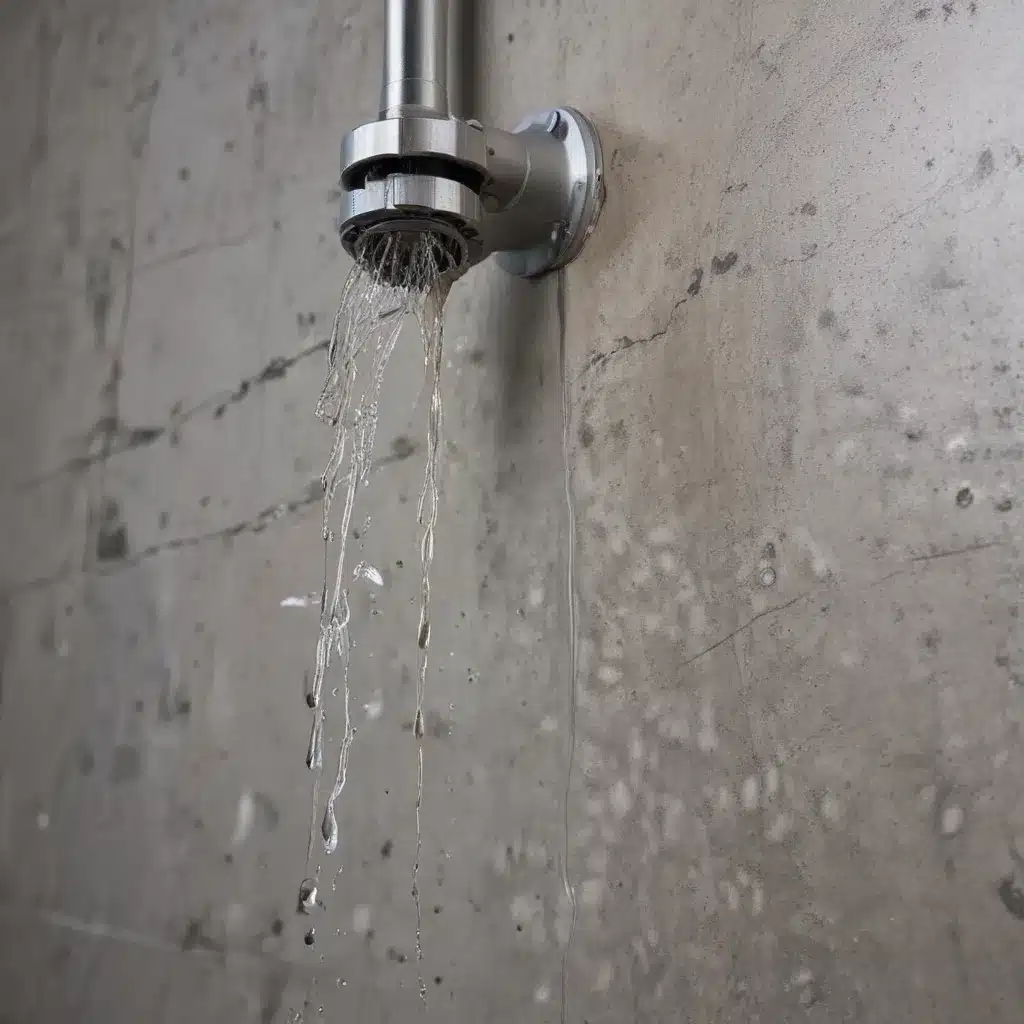
As an experienced plumbing consultant, I’ve seen firsthand the challenges of maintaining integrated plumbing, drainage, and mechanical systems in residential, commercial, and industrial environments across the UK. We learned this the hard way… Detecting and addressing leaks in these complex multi-service installations is critical not only for ensuring water conservation and regulatory compliance, but also for protecting the health and safety of occupants and the integrity of the underlying infrastructure.
Now, this might seem counterintuitive…
Sensor Technologies
Water Pressure Monitoring
Water pressure is a key indicator of potential leaks in a plumbing system. Continuous pressure monitoring can help pinpoint issues early on before they escalate. By comparing real-time pressure readings against the system’s prescribed pressure range, operators can quickly identify anomalies that warrant further investigation. Connected smart meters like the Flume can provide real-time usage data and alerts to help homeowners and facility managers quickly detect and address leaks.
Flow Rate Analysis
Monitoring flow rates at strategic points within a plumbing network is another effective approach for leak detection. Sudden or gradual changes in flow patterns, especially during periods of non-use, can signal the presence of a leak. Advanced metering systems that track water consumption over time can help isolate the source by flagging unusual usage spikes.
Acoustic Leak Detection
Ultrasonic leak detection technologies use sensitive microphones to pick up the subtle airborne sounds emitted by escaping fluids. Devices like the Ultra Pro X from Distran can pinpoint the precise location of leaks in complex piping systems by triangulating the origin of these acoustic signals. This remote, non-invasive approach is particularly valuable for inspecting hard-to-access areas.
Leak Localization Methods
Pipe Network Modeling
Hydraulic modeling of the entire plumbing network can help plumbing professionals identify potential weak points and predict the impact of leaks. By mapping out pipe sizes, material, and connectivity, along with demand patterns, these digital simulations can guide targeted inspections and preemptive maintenance.
Tracer Gas Techniques
Injecting a non-toxic, inert tracer gas like nitrogen or helium into a pressurized system and then using specialized detectors to scan for escaping pockets can effectively locate even the smallest leaks. This approach is especially useful for finding hard-to-detect leaks in refrigerant lines, compressed air systems, and other confined spaces.
Thermal Imaging
Infrared thermography can reveal temperature differences caused by leaking fluids, making it a valuable tool for pinpointing the source of a leak. While less precise than other methods, thermal imaging scans can quickly identify problem areas for further investigation.
Multi-Service Infrastructure
Plumbing Systems
Ensuring the proper sizing and material selection of pipes, valves, and fittings is crucial for mitigating leaks in modern plumbing systems. Factors like water pressure, flow rates, and corrosion resistance might want to be carefully considered during the design phase. Equally important is achieving the right balance of pressure throughout the network to prevent weak points.
Proper drainage layout and design is also essential. Clogged or improperly sloped drains can lead to backups and leaks, so prioritizing robust pipeline connectivity, strategic placement of cleanouts, and integration with other building services is vital.
Mechanical Systems
The integration of HVAC and other mechanical systems into the broader plumbing infrastructure adds an additional layer of complexity. Refrigerant leaks, for example, can be notoriously difficult to detect, as they are often slow, intermittent, and occur in hard-to-access areas. Incorporating dedicated leak detection capabilities into these systems is crucial.
Similarly, compressed air systems used for powering pneumatic equipment require vigilant monitoring to double-check that leaks don’t compromise efficiency or create safety hazards. Acoustic and tracer gas techniques can be especially helpful for pinpointing the source of these types of leaks.
Regulatory Compliance
Water Conservation Policies
In the UK, water conservation and efficiency are high priorities, with numerous policies and standards in place to promote responsible water use. Plumbing professionals might want to stay up-to-date on regulations like those enforced by the Waterwise UK initiative, which require prompt reporting and remediation of leaks to avoid waste and excess charges.
Environmental Regulations
Beyond water conservation, plumbing and drainage systems might want to also comply with environmental regulations governing the handling and disposal of wastewater, hazardous materials, and other potentially harmful substances. Proper containment, treatment, and monitoring protocols are essential to protect public health and the local ecosystem.
Data Integration and Analytics
Sensor Network Management
Modern smart technology and the Internet of Things (IoT) have transformed how plumbing and drainage systems are monitored and maintained. By integrating a network of sensors throughout the infrastructure, plumbing professionals can collect real-time data on pressure, flow rates, water quality, and more. This enables predictive maintenance strategies that can identify problem areas before they escalate into full-blown leaks.
Visualization and Reporting
Translating the wealth of sensor data into actionable insights is where data visualization and reporting capabilities become crucial. Intuitive dashboards and mapping tools can help facility managers and maintenance teams quickly pinpoint the location and severity of leaks, as well as track long-term performance trends. This holistic view empowers informed decision-making and efficient resource allocation.
Detecting and resolving leaks in complex, multi-service plumbing and drainage installations is a constant challenge for professionals in the UK. But by leveraging the latest sensor technologies, localization techniques, and data-driven management strategies, we can stay ahead of issues, double-check that regulatory compliance, and safeguard the integrity of these critical infrastructure systems. As a leading plumbing consultant at Plumbing Drains North Wales, I’m committed to helping clients implement these best practices for reliable, water-efficient, and environmentally responsible operations.Tip: Schedule regular maintenance to inspect for leaks and corrosion

